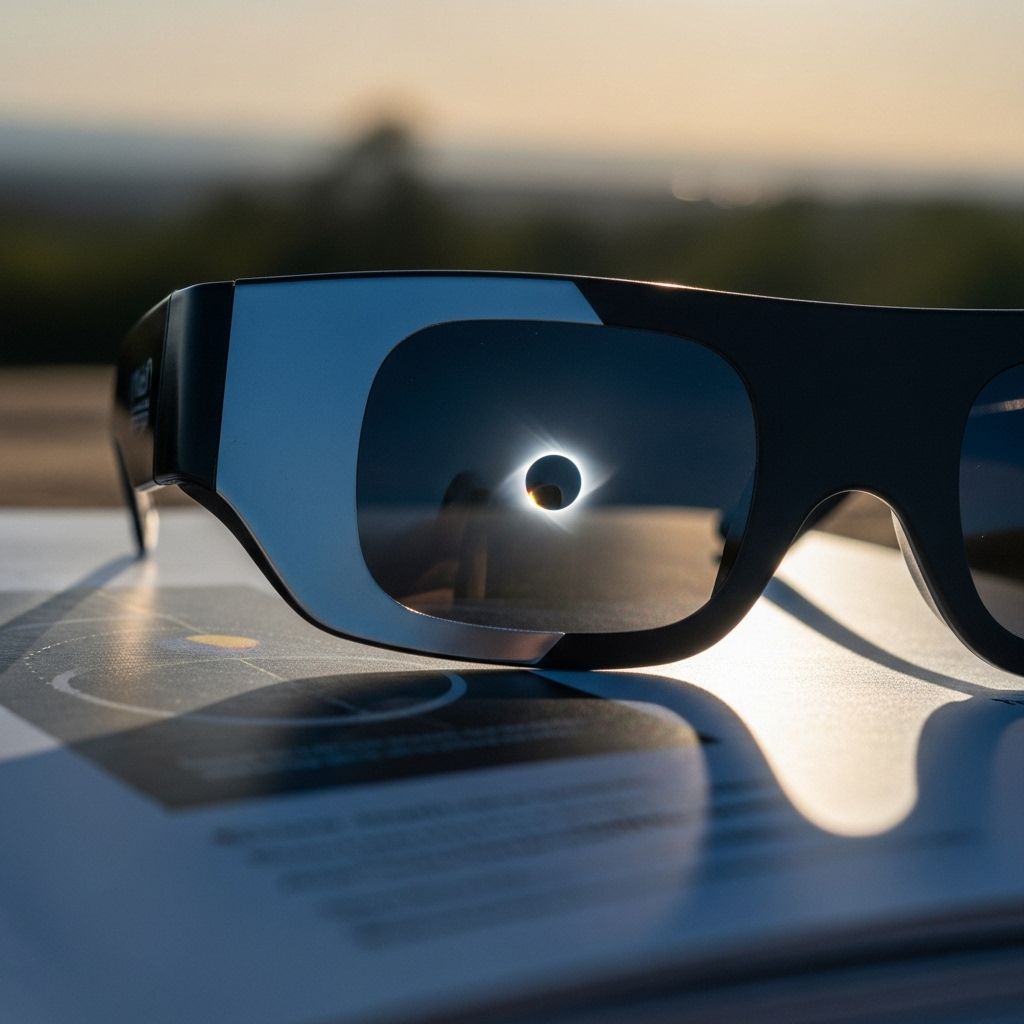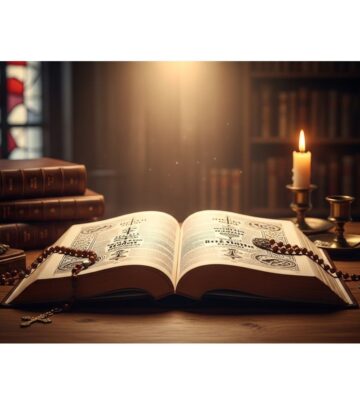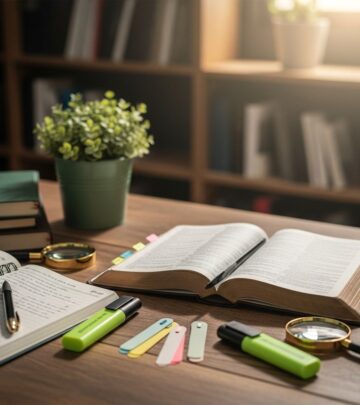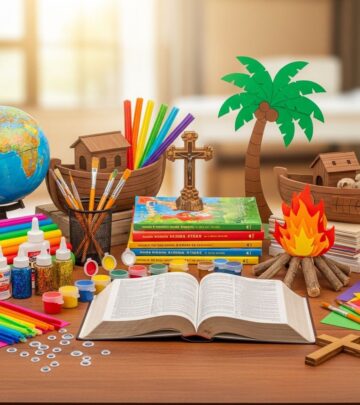Solar Eclipse Glasses: Complete Guide To Safe Viewing
Comprehensive guide on how to protect your eyes and safely enjoy a solar eclipse using proper filters, glasses, and viewing techniques.

Image: HearthJunction Design Team
Solar Eclipse Eye Protection: A Complete Safety Guide
Solar eclipses are awe-inspiring celestial events, captivating millions with their otherworldly beauty. However, observing an eclipse without proper eye protection can have devastating consequences for your vision. This guide will help you enjoy solar eclipses safely, outlining everything you need to know about safe solar viewing equipment, safety standards, and alternative viewing methods.
Why Eye Safety Is Crucial During a Solar Eclipse
Looking directly at the sun—even for brief moments—can cause severe and permanent eye injury, known as solar retinopathy. The sun emits intense ultraviolet and infrared rays that can damage the retina painlessly and irreversibly. This risk is especially high during a partial solar eclipse, when the sun’s light is still dangerously intense. During the brief period of totality in a total solar eclipse (when the sun is completely obscured), it is safe to look with the naked eye—but at all other times, special eye protection is mandatory.
Understanding Solar Eclipse Glasses and Filters
Regular sunglasses, no matter how dark, are not safe for solar viewing. Genuine solar viewing glasses, often called “eclipse glasses” or “solar viewers,” are made with special-purpose solar filters designed to block harmful ultraviolet, visible, and infrared radiation. These filters are hundreds of thousands of times darker than typical sunglasses, permitting you to view the face of the sun safely.
What Makes Solar Eclipse Glasses Safe?
- They block 99.999% of the sun’s visible light, and nearly all UV and IR radiation.
- Through safe glasses, the sun should appear as a comfortably bright, round disk—the only thing visible through the lens.
- Proper filters comply with international safety standards, marked with the ISO 12312-2 code.
Beware of Unsafe Viewing Methods
Some methods might seem suitable but are hazardous:
- Ordinary sunglasses — even multiple pairs stacked
- Smoked glass
- Camera and telescope solar filters not designed for visual use
- Photographic negatives or X-ray film
- Welder’s goggles (unless specified shade 14 or darker)
- Potato-chip bags or other improvised materials
Using these materials can result in serious eye injury, even if your eyes feel no pain in the moment.
Checking Safety Standards: The ISO 12312-2 Certification
To ensure your eclipse glasses or filters are safe:
- Look for the ISO 12312-2 (sometimes written ISO 12312-2:2015) compliance label.
- Ensure the manufacturer is listed by reputable organizations, such as the American Astronomical Society (AAS).
- Buy only from reputable vendors; avoid unverified sellers on marketplaces like Amazon or eBay, where counterfeit products are common.
Important Note: Some counterfeit glasses are falsely labeled as ISO-certified. Always double-check the vendor’s reputation and certification status on the AAS or NASA websites.
How to Inspect and Use Your Solar Eclipse Glasses Safely
What to Look for Before Using
- Inspect both lenses for defects—no scratches, pinholes, bubbles, or dents.
- Handheld viewers should be large enough to cover both eyes completely.
- Read any instructions and warnings included with your product.
- If your glasses are more than three years old, or have been compromised in any way, replace them.
Proper Use Steps
- Put on your eclipse glasses before looking at the sun—never look at the sun through unfiltered eyes, then through the glasses.
- If you wear prescription glasses, put your eclipse glasses over them.
- Aim your face toward the sun, keeping your eclipse glasses on.
- When finished viewing, look away from the sun before removing your glasses.
- For children, supervise usage closely to ensure proper fit and adherence to safety.
Risks of Counterfeit and Substandard Glasses
There has been a rise in counterfeit and non-compliant eclipse glasses, especially before major eclipses. These may be sold at low prices or on unregulated online platforms. Using them can result in no protection at all—putting your eyes at serious risk. Only purchase eclipse glasses from trusted brands recommended by the AAS or similar authorities.
How to Spot Counterfeit Eclipse Glasses
- Missing or suspicious ISO labeling
- Spelling errors or vague manufacturer details
- Odd packaging or lack of safety instructions
- Failure to block out all visible light except the sun
Alternative Safe Methods for Viewing a Solar Eclipse
If you cannot obtain proper eclipse glasses, there are effective indirect viewing techniques that allow you to witness a solar eclipse safely:
- Pinhole Projector: Create a simple pinhole camera with a piece of cardboard or paper; the sun’s image is projected through a pinhole onto a flat surface.
- Tree Shadows: During an eclipse, look for crescent-shaped images under leafy trees, which serve as natural pinhole projectors.
- Projection with Binoculars or Telescopes: Never look through the optics directly! Instead, use them to project the sun’s image onto a white card or wall.
- Commercial Solar Viewers: Some telescopes and binoculars come with certified solar filters designed specifically for safe solar viewing. Make sure these are ISO 12312-2 compliant and properly attached.
Table: Safe and Unsafe Solar Viewing Methods
| Viewing Method | Safe? | Notes |
|---|---|---|
| ISO 12312-2 Certified Eclipse Glasses | Yes | Block dangerous UV/IR and visible light |
| Pinhole Projector | Yes | Projects an image, never direct viewing |
| Properly Filtered Telescopes/Binoculars | Yes | Only with certified filters on front aperture |
| Regular Sunglasses | No | Do not provide sufficient protection |
| Photographic or X-ray Film | No | Not designed for eye safety |
| Welder’s Goggles (unless Shade 14+) | No | Most are not dark enough |
| Looking Directly at the Sun | No | Can cause permanent eye damage |
Solar Viewing for Children and Groups
When watching a solar eclipse with children or larger groups, take extra precautions:
- Check every child’s eclipse glasses for proper fit and absence of damage.
- Supervise their use at all times.
- Explain the importance of wearing glasses before looking up at the sun.
Handheld viewers can also be a good option if glasses do not fit securely. Make sure viewers fully cover both eyes and are held steady throughout viewing.
What If My Eclipse Glasses Are Damaged?
- Discard any eclipse glasses or filters with visible damage: scratches, holes, tears, creases, or separated layers.
- Never attempt to tape, patch, or repair damaged glasses—they are unsafe.
- Inspect your glasses before each use, even if they are brand new.
Special Considerations: Annular vs. Total Solar Eclipse
Different types of solar eclipses require different safety rules:
- Annular Solar Eclipse: At no point during an annular eclipse (“ring of fire”) is it safe to look at the sun without ISO-certified protection, even for a second.
- Total Solar Eclipse: Eye protection is required for all phases except the brief period of totality. As soon as the sun begins to reappear, put your glasses back on immediately.
Additional Tips for Enjoying a Solar Eclipse
- Prepare ahead of time by acquiring all your viewing equipment from reputable vendors well before the event.
- Plan your viewing location for a clear, unobstructed view of the sky.
- Bring extra glasses or viewers for friends and family members.
- Check the weather forecast and have a contingency plan for clouds or poor visibility.
- During the brief period of totality in a total solar eclipse, enjoy the celestial show—but be ready to put your glasses back on as soon as totality ends!
Frequently Asked Questions (FAQs)
Q: Are regular sunglasses safe for watching a solar eclipse?
A: No. Regular sunglasses, no matter how dark, do not block enough harmful light to protect your eyes from solar damage during an eclipse.
Q: How can I confirm my eclipse glasses are safe?
A: Check for the ISO 12312-2 certification, the manufacturer’s name and address, and consult resources from the American Astronomical Society to verify authenticity.
Q: Is it safe to remove glasses during totality?
A: Only during the brief phase of totality in a total solar eclipse—when the sun is completely blocked—can you safely look without glasses. At all other times, eye protection is required.
Q: What should I do if I accidentally look at the sun unprotected?
A: Brief accidental exposure is unlikely to cause permanent damage, but do not risk repeated or prolonged exposure. If you notice vision changes, consult an eye doctor immediately.
Q: Can children use solar eclipse glasses?
A: Yes, but with supervision. Ensure proper fit and check for damage before use. Handheld viewers can be used for very small children.
Summary: Safe Solar Eclipse Viewing Essentials
- Never look directly at the sun without proper protection.
- Only use ISO 12312-2 certified solar eclipse glasses or viewers from reputable vendors.
- Check glasses and filters for defects before every use.
- Avoid counterfeit or uncertified products.
- Use alternative safe viewing methods, such as pinhole projectors, if glasses are unavailable.
- Supervise children and groups closely.
- Enjoy the eclipse—and protect your eyesight for future stargazing!
References
- https://www.space.com/36941-solar-eclipse-eye-protection-guide.html
- https://www.space.com/6-safety-tips-total-solar-eclipse-april-2024
- https://www.space.com/35555-total-solar-eclipse-safety-tips.html
- https://www.space.com/37883-cataracts-from-looking-at-the-sun.html
- https://www.space.com/8-safety-tips-to-watch-annular-solar-eclipse-october-2023
Read full bio of Srija Burman











